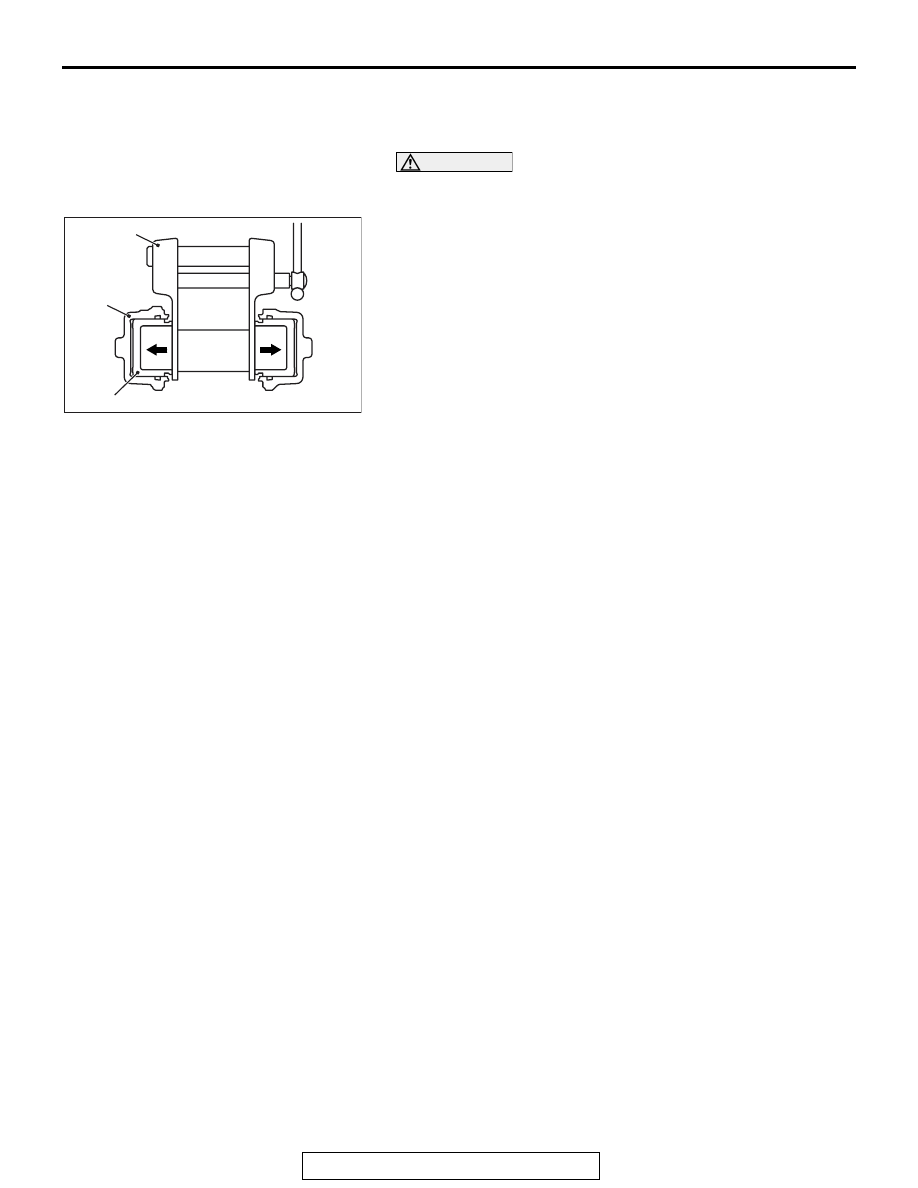Mitsubishi Evolution X. Manual - part 823

ON-VEHICLE SERVICE
TSB Revision
BASIC BRAKE SYSTEM
35A-19
3. Remove the following parts from the brake caliper assembly.
(1) Shim
(2) Brake pad assembly
CAUTION
Keep grease or other soiling off the pad and brake disk
friction surfaces.
AC706163AB
MB990520
Piston
Caliper
body
4. Clean the piston, then press the piston into the cylinder
using the piston expander (Special tool: MB990520).